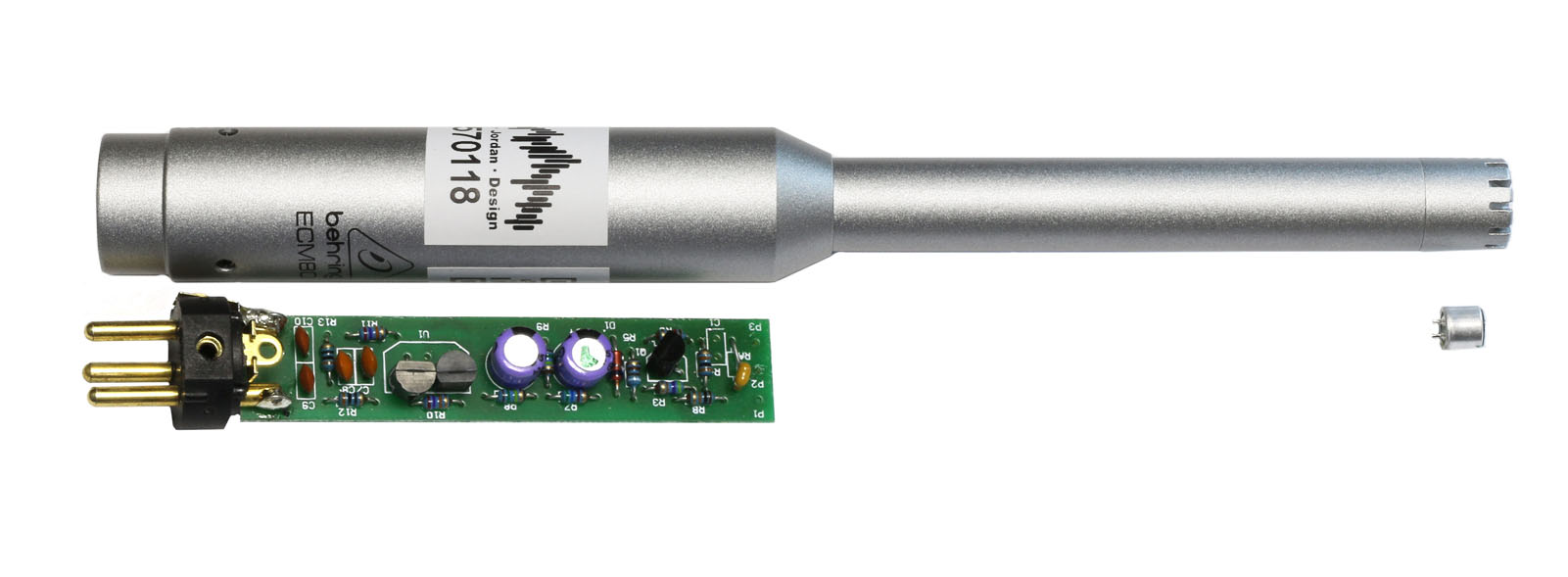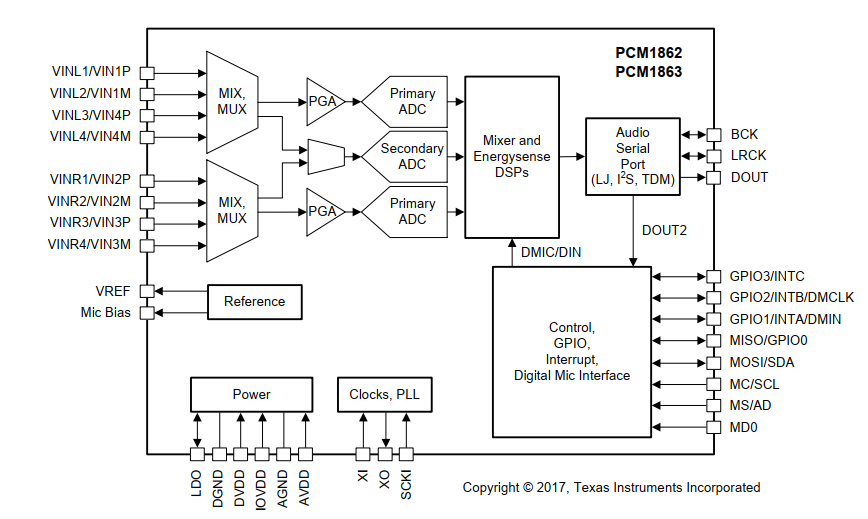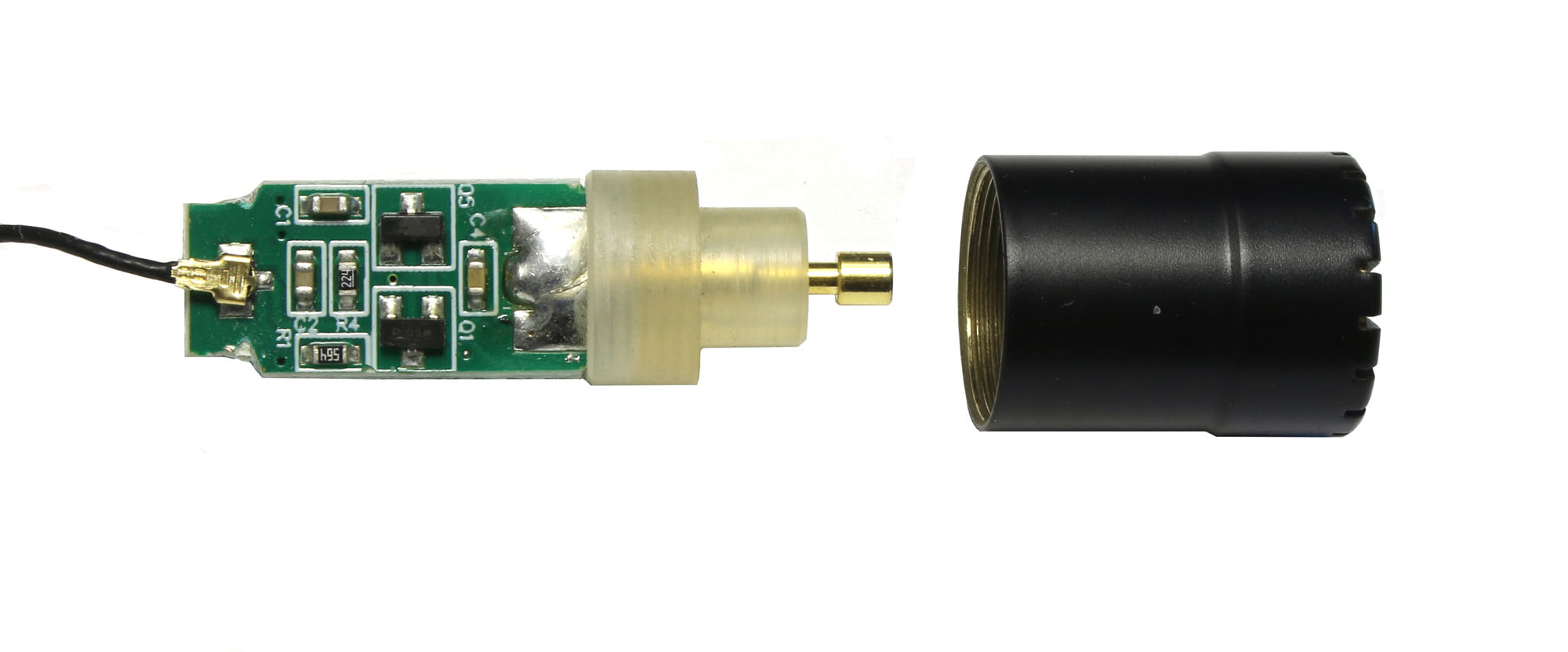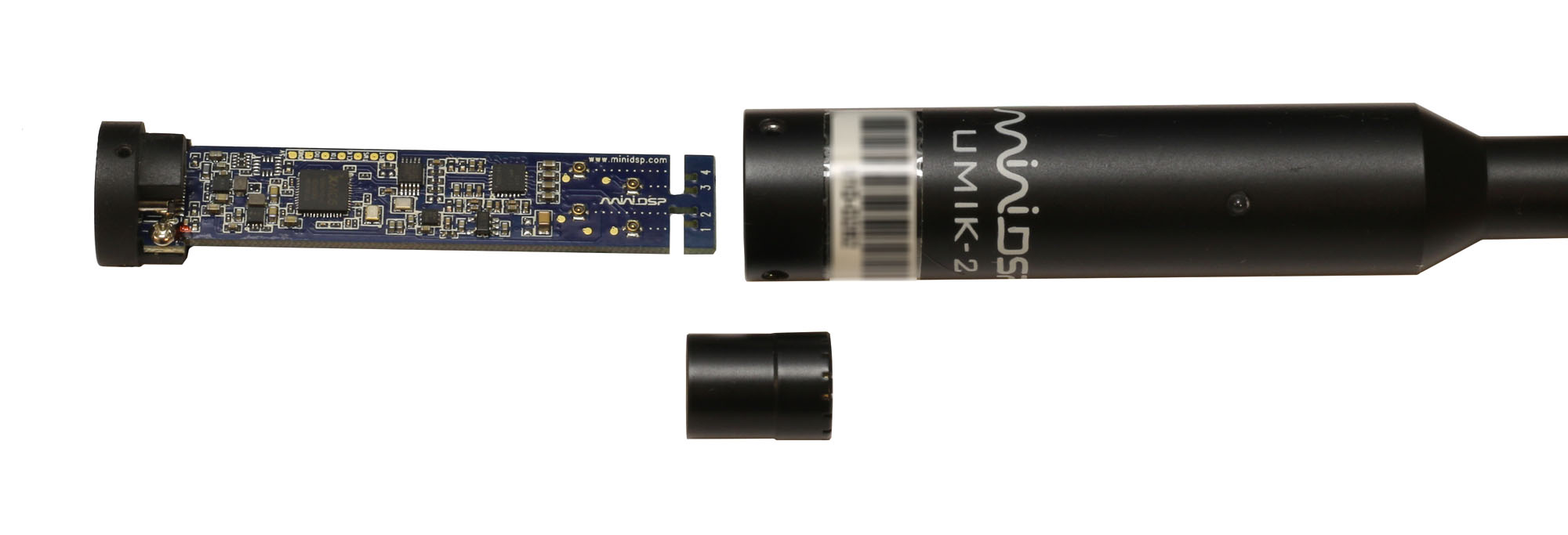In this article we look deeply into widely used measurement microphones. We carefully disassembled these microphones and give you an overview of how they work.
Tear down a Behringer ECM8000
The Behringer ECM8000 is a popular measurement microphone with 48V phantom power. You connect it to a preamplifier via an XLR connector. Many people use the MPA102 from Monacor. This preamp aprovides phantom power for the ECM8000.

The ECM8000 consists of a small circuit for signal conditioning and an inexpensive 1/4" electret capsule. The circuit generates the supply voltage for the electret capsule from the phantom power of 48V. This is not a polarization voltage, but only the supply voltage for the FET, which is built directly inside the capsule as an impedance converter . The microphone signal is not further amplified, but balanced, only.
Tear down a MiniDSP UMiK-1
The miniDSP Umik-1 is a widely used and inexpensive USB measurement microphone. In very simplified terms, it can be viewed as a digitized version of Behringer's ECM8000. The designs are clearly similar. In addition, both microphones use an inexpensive 1/4" capsule.
But what is inside the UMIK-1?

In contrast to the very simple USB microphones, MiniDSP uses a 32-bit microcontroller (PIC) and a separate ADC in the UMIK-1. The cheaper single-chip solutionshave typically problems with interference from the USB digital part. For the UMIK-1, MiniDSP uses a high-quality stereo ADC with a sampling rate of 192kHz, 24-bit and 110dB SNR. However, the UMIK-1 only provides a sampling rate of 48kHz via USB. And please note,it is a stereo device. The UMIK-1 appears as a stereo device and both signals are supplied by the ADC via USB. The gain of both channels is identical. Therefore, the stereo function does not initially represent any additional benefit.
The PCM1863 has an adjustable gain (PGA programamble gain amplifier). This function can be set on the UMIK-1 via DIP switches in the range from 0-36dB. The default value is 18dB. This value is also displayed in the USB descriptor. The UMIK-1 also appears as an audio device with the name "UMIK1 gain 18dB". The DIP switches are read at boot-time and set the gain. With the UMIK-1, MiniDSP failed to dynamically read out the gain and build it into the USB descriptor. That information from the descriptor would be helpful for measurement programs that could read out the current gain. With the PCM1863, the gain is adjusted by software. Therefore, you could have used USB-HID commands or gain commands (USB audio) during runtime to set the gain.
Below you find the block diagram of the PCM1863

Datasheet for TI's PCM1863
MiniDSP has integrated many of the functions described above into the UMIK-2, which achieves significantly better dynamics. Therefore, the UMIK-1 is well suited for measurements of room acoustics and measurements on loudspeakers, but not for low-noise measurements or recordings.
You can also find audio samples with the UMKI-1 in our basic article on USB measurement microphones.
USB measurement microphone MiniDSP UMiK-2
The UMIK-2 is a significantly improved USB measurement microphone. At first glance it resembles the UMIK-1. At least the design corresponds roughly to the UMIK-1. However, the UMIK-2 is a completely differnt development.
What are the differences to the UMIK-1 (UMIK-1 vs. UMIK-2)?
- The UMIK-2 uses a much larger capsule (1/2" instead of 1/4") and is therefore less noisy.
- The capsule is interchangeable with a standard thread (60UNS), so capsules from Bruel&Kjaer, GRAS, MTG etc. can also be used (only pre-polarized, no 200V models)
- More complex impedance converter
- Sampling rates 192kHz instead of 48kHz
- 32-bit data transfers instead of 16-bit
- Firmware can be updated via USB.
What is inside the UMIK-2?
The circuit board in detail

The controller is from XMOS type XUF208-128-QF48
The ADC is a tlv320adc5140 from TI
It should be emphasized that the board was also designed more generic as a 4-channel systemt.
The impedance converter in the head just behind the capsule

The impedance converter is supplied with 5V DC from the USB port.
Just like the UMIK-1, the UMIK-2 works exclusively with the 5V supply from the USB connection. Due to this relatively low voltage, the maximum output is limited. USB microphones in a class higher ( ATD5-T ) use DC/DC converters and can thus process input voltages of 28V (peak-to-peak) without clipping.



